

Children in the Democratic Republic of Congo mine for coltan and face abuse to supply smartphone industry. By Esdras Tsongo Updated about an hour agoSat 29 Feb 2020, 11:34pm It is still dark when Solange leaves home at 5:00am for her job in the mines of eastern Congo, where she digs by hand for a dull black metallic ore called columbite-tantalite.
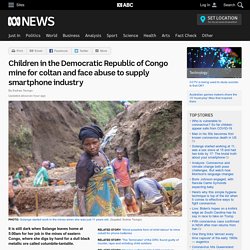
You might never have heard of it, but this ore — known as coltan for short — contains a key metal used in the manufacture of electronic circuit boards that power smartphones, game consoles and computers. But the story of coltan is about much more than mining profits and technological wonder. It is also a story of exploitation. Congo's black gold Years of violence and political conflict across the Democratic Republic of Congo have made its vast mineral wealth an attractive revenue raiser — and rebel groups will do whatever it takes to control supply. George Clooney 'saddened' by Nespresso link to child labour in Guatemala. Updated about 4 hours agoThu 27 Feb 2020, 2:26am Oscar-winning actor George Clooney says he was "surprised and saddened" after an investigation revealed child labour at Guatemalan coffee farms linked to the Nespresso coffee he advertises.
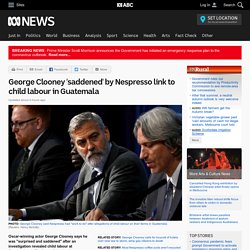
Key points: A British TV documentary appears to show under-aged workers on six farms that supply to NespressoMr Clooney has been a Nespresso brand ambassador since 2006, appearing in popular TV commercialsHe said the Swiss-based coffee company had "work to do" to resolve the situation The investigation carried out by Britain's Channel 4 shows children working on six farms in Guatemala, the largest coffee producer in Central America. These three lessons from history could help us understand our digital future. Posted about 3 hours agoSun 28 Jul 2019, 1:00am In our quest to understand more about a world of digital surveillance, screen time and increasing internet usage, we are often urged to look towards the visions of billionaire tech oligarchs like Mark Zuckerberg or Elon Musk.

However, digital rights activist Lizzie O'Shea says the rules of digital society are not yet set in — and the answers we're looking for can be found in the past. "It's important to look backwards because sometimes, it feels as though technology doesn't have a history — that it's just arrived — and in fact, that's not the case," she says. "Technology intersects with big ideas like democracy and rights and self-determination and they've got a history that becomes relevant to how they're expressed in the digital age. " Don't bank on a wage rise this year. Expect rate cuts instead.
Analysis Posted about 6 hours agoSun 21 Jul 2019, 8:07pm Groucho Marx summed it up perfectly: "I worked my way up from nothing to a state of extreme poverty.
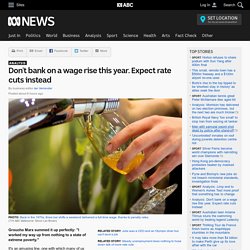
" It's an amusing line, one with which many of us identify. Getting a job, holding it and trying to secure a decent wage has become an increasingly difficult task, particularly for our young. On paper, our jobs numbers look pretty good. The great bugbear, however, is wages growth or, rather, the lack thereof. The Industrial Revolution, 1750-1914. Year level: Year 9 Australian Curriculum: History reference – Depth Study 1 Making a Better World?
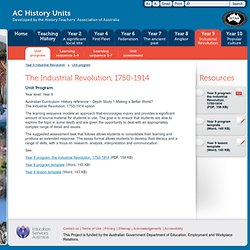
The Industrial Revolution, 1750-1914 option The learning sequence models an approach that encourages inquiry and provides a significant amount of source material for students to use. The goal is to ensure that students are able to explore the topic in some depth and are given the opportunity to deal with an appropriately complex range of detail and issues. The suggested assessment task that follows allows students to consolidate their learning and produce an extended response.
See: Year 9 program: the Industrial Revolution, 1750-1914 (PDF, 158 KB) Year 9 program template (Word, 145 KB) 1746 map of London now available as an incredibly detailed Google map. The Centre for Metropolitan History and Museum of London Archaeology wanted a map that could help them visualise data from the 18th and 19th centuries.
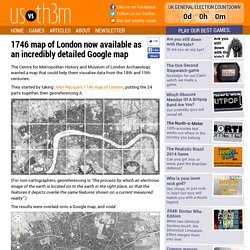
They started by taking John Rocque’s 1746 map of London, putting the 24 parts together, then georeferencing it. (For non-cartographers, georeferencing is “the process by which an electronic image of the earth is located on to the earth in the right place, so that the features it depicts overlie the same features shown on a current measured reality”.) Spinning wheel. History[edit] The earliest clear illustrations of the spinning wheel come from Baghdad (drawn in 1234),[2] China (c. 1270) and Europe (c. 1280), and there is evidence that spinning wheels had already come into use in both China and the Islamic world during the eleventh century.[3] According to Irfan Habib, the spinning wheel was introduced into India from Iran in the thirteenth century.[3] In France the spindle and distaff were not displaced until the mid 18th century.[4] According to Mark Elvin, 14th-century Chinese technical manuals describe an automatic water-powered spinning wheel.

Comparable devices were not developed in Europe until the 18th century. Weaving. Putting-out system. Introduction: What is Imperialism? “Your father’s lightsaber.

Untitled Document. What was Pre-Industrial Society Like?

How much did the Industrial Revolution change society? Did the Industrial Revolution improve life for most people?